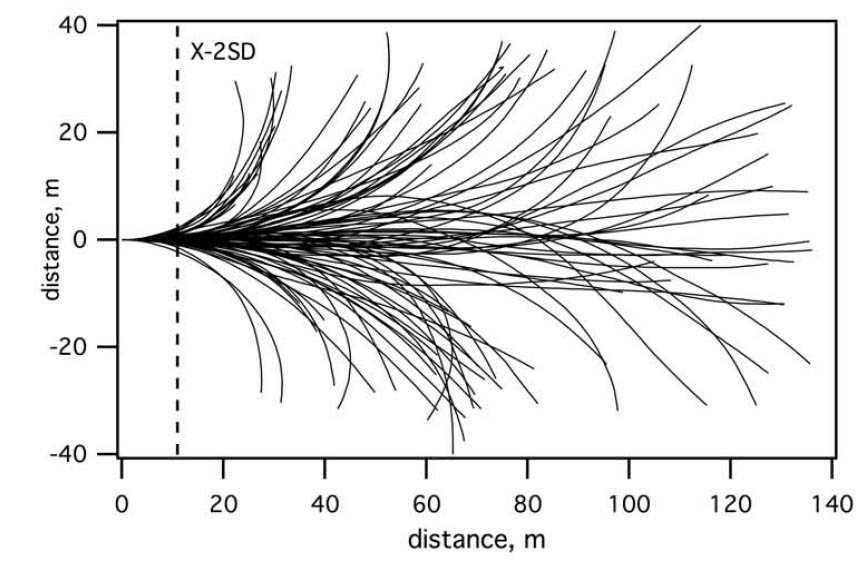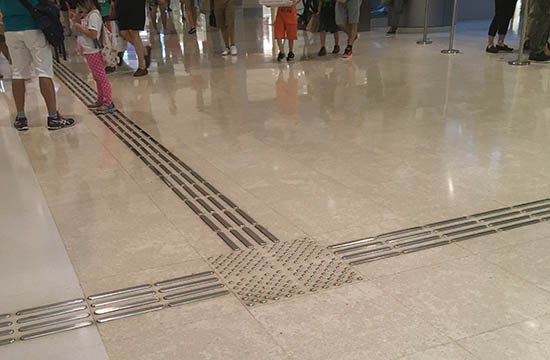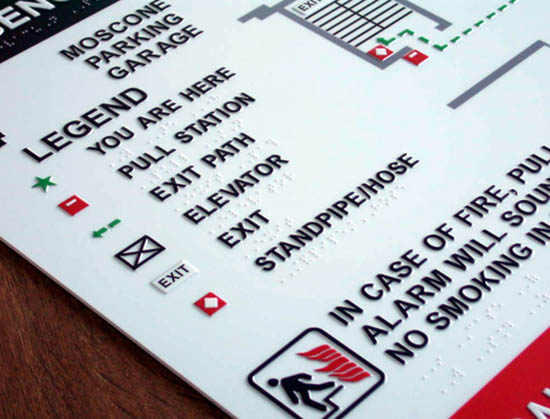Design For Dignity
Retail Guidelines




For a customer with disability, the journey to the store is just as important as the design of the store itself. Being able to get to the store by public transport or find an accessible parking space, navigate the shopping centre and easily locate and use accessible toilets are important parts of the shopping experience.
“Allocate more car parks for people with a disability and change location of accessible car parking to being adjacent to front door.”
“Disabled parking with room for ramp to come out of the back of the car and not be in the way of other traffic.”
For people who are blind or have low vision, drop off zones for taxis and other ridesharing vehicles — and clear navigation from these to the entrance is beneficial.
Without clear and consistent zones, grades and path surfaces for exiting the vehicle and navigating to the entrance, there is a higher risk of accidents and reduced independence for people reliant on taxis and ridesharing as a form of transport.

Being able to travel through the shopping centre without incurring obstacles such as steps, ramps, turnstiles, unmarked glass doors and unmarked head height obstacles is critically important as it impacts customers with a variety of disabilities.
A 2012 study*Bestaven, E, Guillaud, E, Cazalets, J, 2012 Is “Circling” Behaviour in Humans Related to Postural Asymmetry, Universite de Bordeaux, PLOS One 7(9) examined the phenomena that people walking in a natural environment without stable visual landmarks often get lost and start walking in circles. The test blindfolded people and tracked where they walked without the ability to see landmarks. The chart below shows how people who can't see veered off course during their testing. After 140 metres, few were still on track.
What does that have to do with retail? For a person who is blind or has very low vision, this has an influence on whether the design of shopping centre areas with significant open space is intuitive to use and dignified or not.

For people who are blind, having pathways with a distinct finish or texture can let people know where the pathway is located. In the absence of tactile indicators, people who are blind tend to navigate by ‘shore lining’ or following the line of buildings or shopfronts.
This also means that having obstacles in front of stores like ‘A frame’ signage or merchandising displays can be a dangerous obstacle. For people with low vision, having a distinct luminance contrast between the pathway and surrounding floor can significantly ease stress in wayfinding.
Tactile maps are maps which allow people, including a person who is blind or has low vision to orient themselves with the shopping centre. Key features or pathways on the map have a tactile profile that can be detected and understood by someone who is blind. These are also combined with braille descriptions. There are competing technologies now that allow people with disability to navigate within shopping centres.
“Provide tactile way finding or audio way finding for all smartphones and audio eftpos.”

Many older shopping centres have designated accessible toilets that do not meet current standards and have not been upgraded.
Additionally, where these facilities are shared with baby change rooms they are rarely available for customers with disability or the baby change facilities impede on the use of the accessible toilet facilities.
The experience of carers who need to assist changing teenage or adults in an accessible toilet area is also difficult and undignified.
Changing happens on the floor of the bathroom which can be wet or dirty and discourages people from participating in the retail experience.
Designs for dedicated accessible facilities with additional circulation space, adult change facilities and assistive hoists are available through Changing Places (changingplaces.org.au).